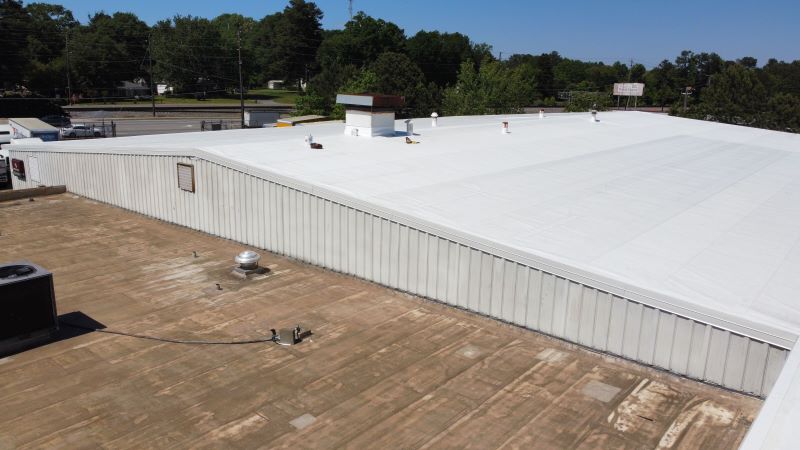When it comes to your commercial property, the roof is one of the most critical components. It protects your building, employees, and assets from the elements, making it essential to ensure it remains in top condition. However, like all building materials, roofs have a limited lifespan and will eventually need to be replaced. In this guide, we’ll explore the factors that determine a roof’s lifespan, signs that indicate it may be time for a replacement, and the steps involved in replacing a commercial roof.
Understanding Roof Lifespan
The lifespan of a commercial roof depends on several factors, including the type of roofing material, installation quality, maintenance, and climate. Here’s a general guideline for common commercial roofing materials:
- EPDM (Rubber): 20-30 years
- TPO and PVC: 20-30 years
- Built-Up Roofing (BUR): 20-30 years
- Metal Roofing: 30-50 years
- Modified Bitumen: 20-30 years

Signs You Need a New Roof
Several signs indicate that your commercial roof may need replacing:
- Age: If your roof is approaching the end of its expected lifespan, it’s wise to start planning for a replacement.
- Leaks: Persistent leaks, especially after repairs, could indicate underlying issues that require a new roof.
- Sagging: Any noticeable sagging or drooping in the roof structure indicates significant damage and the need for immediate replacement.
- Water Damage: Water stains on ceilings or walls, mold growth, or musty odors can indicate water intrusion from a failing roof.
- Energy Bills: A sudden increase in energy bills could be due to poor insulation caused by an aging roof.
The Replacement Process
- Assessment: A professional roofing contractor will assess the condition of your roof to determine if a replacement is necessary.
- Preparation: The existing roofing material is removed, and the roof deck is inspected for damage.
- Installation: New roofing material is installed, including underlayment, insulation, and the primary roofing material.
- Finishing Touches: Flashing, gutters, and other accessories are installed to ensure the roof is watertight.
- Inspection: A final inspection is conducted to ensure the new roof meets all standards and regulations.

Choosing the Right Contractor
Replacing a commercial roof is a significant investment, so it’s crucial to choose the right contractor. Look for a licensed and insured contractor with experience in commercial roofing. Ask for references and examples of past work to ensure they can handle your project.

Conclusion
Replacing a commercial roof is a major undertaking, but it’s essential to protect your property and investment. By understanding the signs that indicate you need a new roof and working with a reputable contractor, you can ensure your new roof provides reliable protection for years to come. If you’re unsure about the condition of your roof, contact a professional roofing contractor for an inspection and expert advice.




